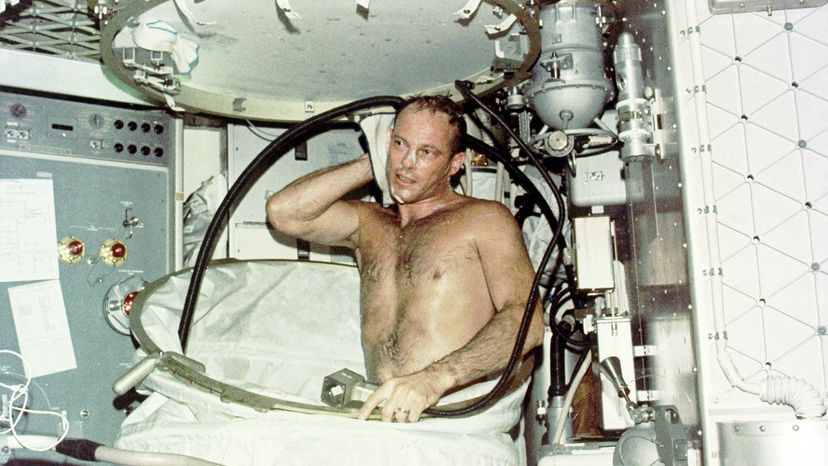Skylab to the International Space Station

In 1973, NASA placed its first space station, Skylab, into Earth orbit. Although Skylab was damaged in flight, NASA sent the first crew to repair the spacecraft and make it livable, which showed repairs could be achieved in space. The crew remained on board for 28 days and conducted numerous experiments on the physiological effects of long duration spaceflight and observations of the sun and Earth. Two subsequent crews spent time (58 days and 84 days) in the Skylab continuing experiments and observations, demonstrating that humans could stay in space for long periods [source: Garber and Launius].
Apollo Soyuz Test Project (1975)
The final Apollo mission was the Apollo Soyuz Test project, which was a joint mission with the Soviet Union. An Apollo spacecraft with three astronauts docked in Earth orbit with a Russian Soyuz spacecraft containing two cosmonauts. The crews spent two days together conducting experiments. The flight demonstrated that the United States and the Soviet Union could work together in space and laid the groundwork for the Shuttle/Mir program and the International Space Station two decades later [source: Howell].
Advertisement
Space Shuttle (1981-2011)
In 1981, the first reusable spacecraft, the space shuttle, flew into Earth's orbit. NASA's fleet of four space shuttles operated for 30 years, ferrying humans into space, deploying satellites and space probes, and helping to build the International Space Station. Two shuttles and their crews, the Challenger and the Columbia were tragically lost in 1986 and 2003, respectively. NASA learned many lessons in operating the shuttle and made several redesigns and procedural changes to make the shuttle flights safer. The 135th and final shuttle mission concluded on July 21, 2011, when the shuttle Atlantis rolled to a stop at Kennedy Space Center in Florida [source: Loff].
International Space Station (1998-Present)
NASA, working with 15 other nations, began building the ISS in 1998, with the goal of establishing a permanent human presence in Earth orbit for conducting experiments and observations The largest single structure ever built by humans outside of Earth, the International Space Station has been continuously occupied since November 2000, though construction continued until 2011. Some 230 people from 18 countries have sent time at the ISS [source: Howell].